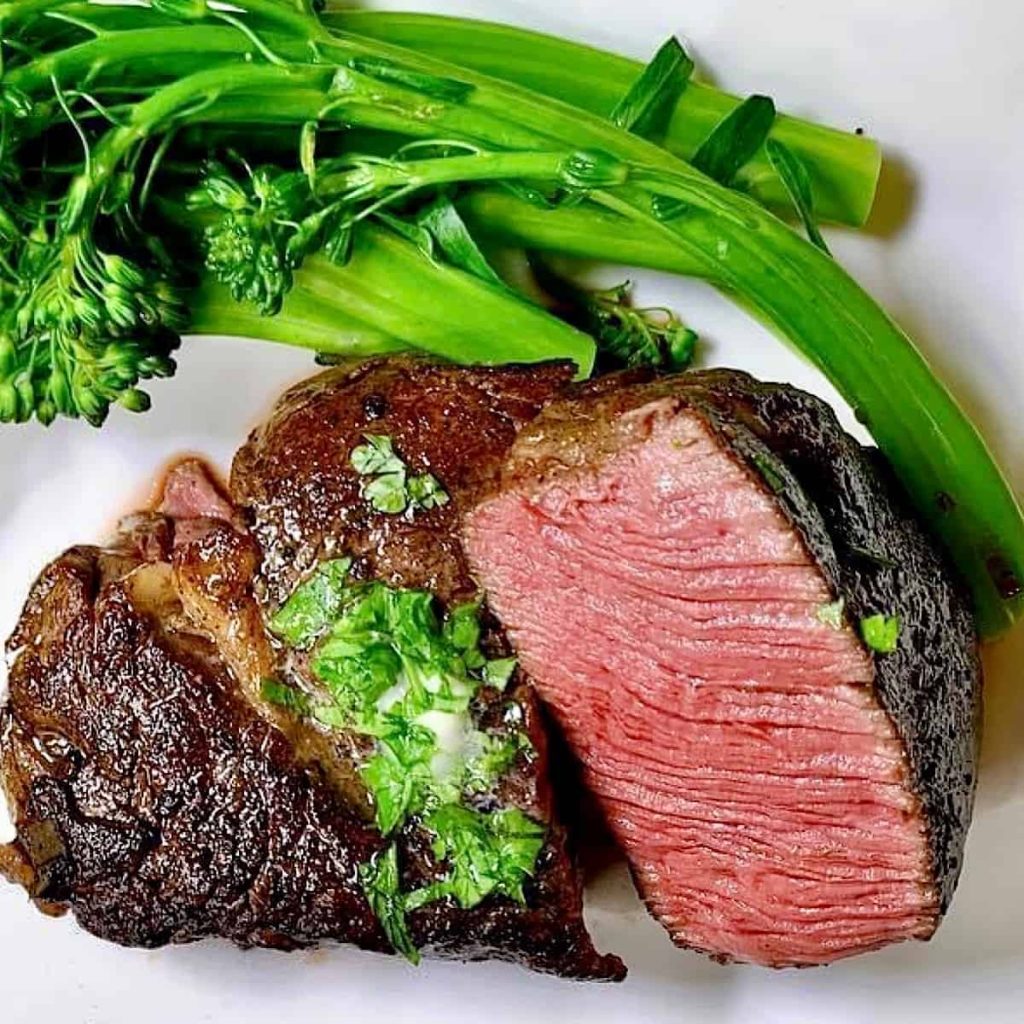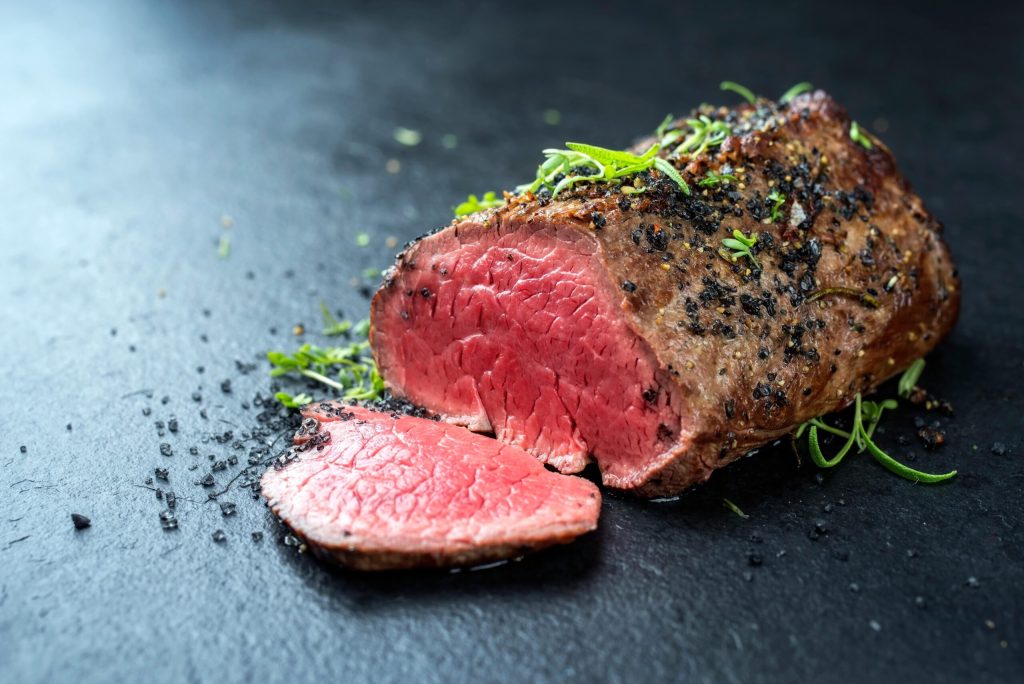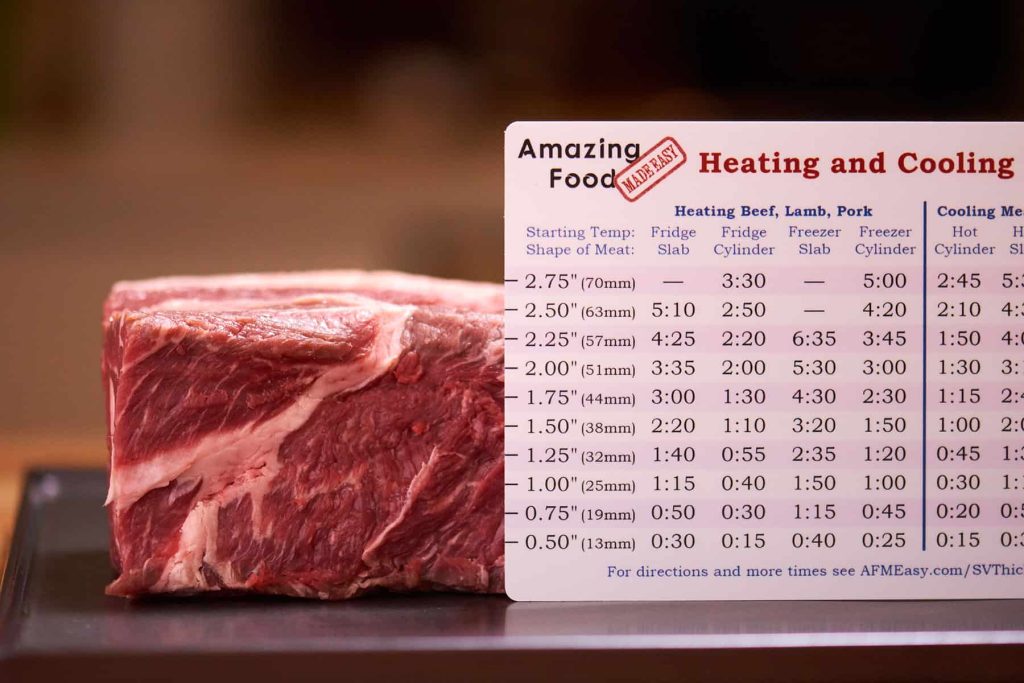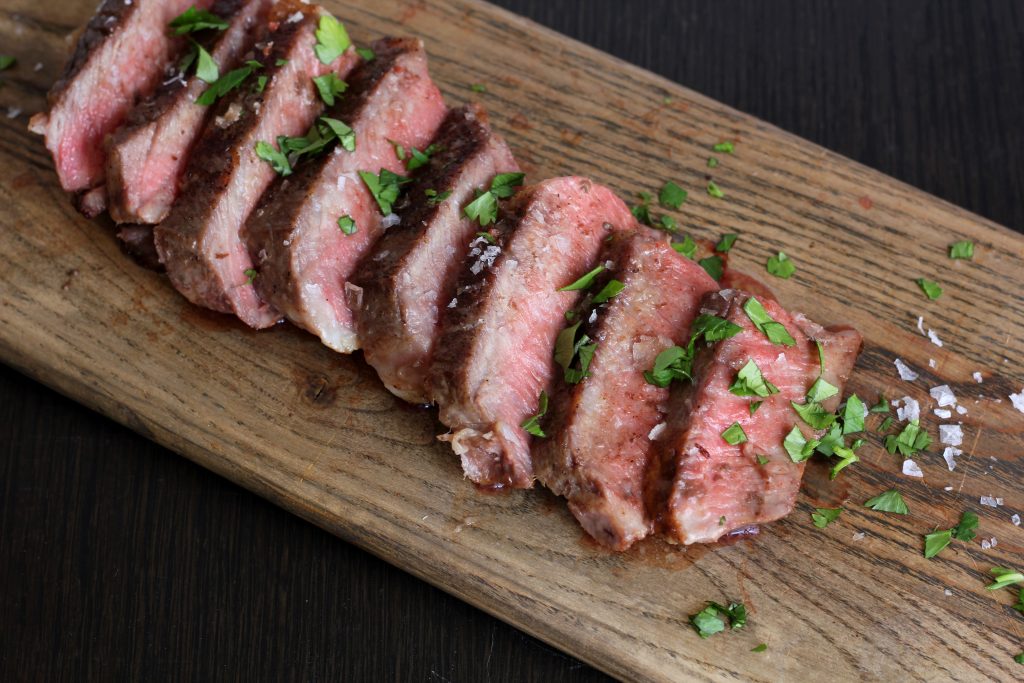Sous Vide Filet Mignon: Perfectly Cooked Steak Every Time
Sous Vide Filet Mignon: Perfectly Cooked Steak Every Time
Introduction: What is Sous Vide?
When it comes to cooking steak, achieving the perfect level of doneness can be a challenge. However, with the sous vide cooking technique, you can elevate your culinary skills and create a mouthwatering filet mignon that is cooked to perfection. Sous vide is a method that involves cooking vacuum-sealed food in a temperature-controlled water bath. This gentle and precise cooking process ensures that the steak is evenly cooked from edge to edge, resulting in a tender and juicy piece of meat.
Benefits of Cooking Filet Mignon Sous Vide
There are several advantages to cooking filet mignon using the sous vide method. Firstly, sous vide allows you to achieve precise temperature control, ensuring that the steak is cooked exactly to your desired level of doneness. Whether you prefer a rare, medium-rare, or well-done steak, sous vide ensures consistent results every time. Additionally, cooking filet mignon sous vide retains its natural juices and flavors, resulting in a succulent and flavorful steak.
Choosing the Right Cut of Filet Mignon
Before you embark on your sous vide cooking journey, it’s essential to select the right cut of filet mignon. Look for cuts that are well-marbled with fat, as this will enhance the tenderness and flavor of the steak. Ideally, choose filet mignon that is around 1.5 to 2 inches thick for optimal results.
Preparing the Filet Mignon for Sous Vide Cooking
To prepare the filet mignon for sous vide cooking, start by patting the steaks dry with a paper towel. This helps to remove any excess moisture, ensuring a better sear later on. Season the steaks generously with salt and pepper or any other preferred seasonings. For additional flavor, you can also add herbs, garlic, or spices to the steaks.
Vacuum Sealing the Filet Mignon
Once the steaks are seasoned, it’s time to vacuum seal them. Vacuum sealing is crucial in sous vide cooking as it removes air and ensures that the steak is in direct contact with the water, promoting even cooking. If you don’t have a vacuum sealer, you can use the water displacement method by placing the seasoned steak in a resealable bag and slowly submerging it in water, allowing the pressure to push out the air.
Sous Vide Cooking Temperature and Time
The next step in cooking filet mignon sous vide is setting the temperature and time. For a medium-rare steak, set the sous vide water bath to 130°F (54°C) and cook the steaks for approximately 1.5 to 2 hours. Adjust the temperature and time according to your preferred level of doneness. The precise temperature control of sous vide ensures that the steak cooks evenly without the risk of overcooking.
Finishing Techniques for a Perfectly Seared Steak
Once the filet mignon is cooked sous vide, it’s time to give it a delicious sear. Heat a cast-iron skillet or grill to high heat and sear the steaks for about 1 minute on each side, or until a golden-brown crust forms. This quick sear adds a caramelized flavor and beautiful char to the steak while preserving its tenderness and juiciness.

Serving Suggestions and Accompaniments
When it comes to serving sous vide filet mignon, simplicity is key. Allow the steak to rest for a few minutes before slicing it against the grain. This ensures maximum tenderness. You can serve the steak on its own as the star of the dish or pair it with your favorite sides such as roasted vegetables, mashed potatoes, or a fresh salad. A drizzle of compound butter or a red wine reduction can also elevate the flavors of the steak.
Tips for Success: Common Mistakes to Avoid
While cooking filet mignon sous vide is a straightforward process, there are a few common mistakes to avoid. Firstly, make sure to properly seal the steaks to prevent water from entering the bag. Additionally, be mindful of the cooking time and temperature to achieve the desired level of doneness. Lastly, don’t skip the searing step, as it adds texture and enhances the overall flavor of the steak.
Safety Considerations when Cooking Sous Vide
When cooking sous vide, it’s essential to prioritize food safety. Always ensure that the sous vide equipment is clean and well-maintained. Use food-grade vacuum-sealed bags and handle the steak with clean hands to prevent cross-contamination. Follow the recommended cooking temperatures and times to ensure that the steak reaches a safe internal temperature.
Cleaning and Maintaining Sous Vide Equipment
Proper maintenance of your sous vide equipment is crucial for longevity and performance. After each use, clean the water bath and the sous vide machine according to the manufacturer’s instructions. Ensure that all parts are thoroughly dried before storage. Regularly check the water bath for any mineral deposits or buildup and descale if necessary.
Conclusion
Sous vide filet mignon is a game-changer when it comes to cooking the perfect steak. The gentle and precise cooking method ensures that the steak is cooked evenly and retains its natural juices and flavors. With proper seasoning, vacuum sealing, and the right temperature, you can enjoy a tender and succulent filet mignon every time. Experiment with different seasonings and finishing techniques to create a truly remarkable dining experience.
FAQs
- Can I use frozen filet mignon for sous vide cooking?
- Yes, you can cook frozen filet mignon sous vide. However, you will need to adjust the cooking time accordingly.
- Can I marinate the filet mignon before cooking sous vide?
- Yes, you can marinate the filet mignon before sous vide cooking. Just make sure to pat it dry before seasoning and vacuum sealing.
- Can I sous vide filet mignon without a vacuum sealer?
- Yes, you can use the water displacement method if you don’t have a vacuum sealer. Simply place the seasoned steak in a resealable bag and submerge it in water, allowing the pressure to push out the air.
- What other cuts of steak can I cook sous vide?
- Sous vide cooking works well with various cuts of steak, including ribeye, sirloin, and New York strip.
- Can I refrigerate the cooked steak before searing it?
- Yes, you can refrigerate the cooked steak for a short period before searing. Just make sure to bring it to room temperature before searing to ensure even heat distribution.
Sous Vide Steak Time Temp Chart: The Perfect Guide to Cooking Steak
Cooking steak to perfection can be a challenging task, as overcooking or undercooking can affect its taste and texture. However, with the advent of sous vide cooking, achieving a consistently juicy and tender steak has become much easier. In this article, we will provide you with a comprehensive sous vide steak time and temperature chart that will serve as your ultimate guide to cooking the perfect steak. From rare to well-done, we’ll cover all the doneness levels and their corresponding time and temperature recommendations. So, let’s dive in!
1. The Basics of Sous Vide Cooking
Sous vide cooking involves sealing the food in an airtight bag and immersing it in a water bath with precise temperature control. This technique allows for even and consistent cooking, resulting in perfectly cooked steak every time. By cooking at a lower temperature for a longer duration, you retain the natural juices and tenderness of the steak.
2. Understanding Steak Doneness Levels
Before diving into the recommended time and temperature for sous vide steak, it’s essential to understand the different doneness levels and how they affect the steak’s taste and texture.
2.1 Rare
A rare steak is cooked to an internal temperature of around 125°F (51°C). It has a cool red center and is soft and tender.
2.2 Medium Rare
Medium rare is one of the most popular doneness levels for steak. It is cooked to an internal temperature of approximately 135°F (57°C) and has a warm red center. The steak is still tender and juicy.
2.3 Medium
A medium steak is cooked to an internal temperature of about 145°F (63°C). It has a pink center and is slightly firmer than medium rare.
2.4 Medium Well
For those who prefer a bit more doneness, medium well is cooked to an internal temperature of around 155°F (68°C). It has a slightly pink center with a hint of pink towards the edges.
2.5 Well Done
Well-done steak is cooked to an internal temperature of approximately 160°F (71°C) or higher. It has no pinkness and is fully cooked throughout, but it may be less tender compared to the other doneness levels.
3. Recommended Time and Temperature for Sous Vide Steak
Now that you understand the various doneness levels, let’s explore the recommended time and temperature for each.
3.1 Rare Steak
To achieve a perfect rare steak, set your sous vide water bath to 125°F (51°C) and cook the steak for 1.5 to 2 hours.
3.2 Medium Rare Steak
For a juicy medium rare steak, set the water bath temperature to 135°F (57°C) and cook the steak for 2 to 3 hours.
3.3 Medium Steak
To achieve a medium steak, set the water bath temperature to 145°F (63°C) and cook the steak for 2.5 to 4 hours.
3.4 Medium Well Steak
For a slightly more cooked steak, set the water bath temperature to 155°F (68°C) and cook the steak for 3.5 to 5 hours.
3.5 Well-Done Steak
If you prefer a well-done steak, set the water bath temperature to 160°F (71°C) or higher and cook the steak for 4 to 6 hours.
4. Tips for Preparing Sous Vide Steak
- Season the steak before vacuum-sealing it to enhance its flavor.
- Use high-quality vacuum-sealed bags or a vacuum sealer to ensure proper sealing.
- Preheat the water bath to the desired temperature before placing the steak.
- Consider adding aromatics such as garlic, thyme, or rosemary to the bag for additional flavor.
- Once cooked, pat the steak dry and season it again before searing.
5. Searing the Steak
To achieve a beautiful crust and added flavor, sear the steak after it has been cooked sous vide. Heat a cast-iron skillet or grill to high heat and sear the steak for about a minute on each side. This step gives the steak an appetizing appearance and enhances its taste.
6. Frequently Asked Questions (FAQs)
6.1 Can I leave the steak in the sous vide for too long?
No, you can leave the steak in the sous vide for an extended period without overcooking it. However, there is a limit to the cooking time based on the desired doneness level.
6.2 Can I use frozen steak for sous vide cooking?
Yes, you can use frozen steak for sous vide cooking. Simply increase the cooking time by approximately 50% to ensure thorough cooking.
6.3 What is the minimum cooking time for sous vide steak?
The minimum cooking time for sous vide steak depends on the desired doneness level. It typically ranges from 1.5 to 2 hours for rare steak to 4 to 6 hours for well-done steak.
6.4 Can I marinate the steak before sous vide cooking?
Yes, you can marinate the steak before sous vide cooking to infuse additional flavors. However, make sure to pat it dry before vacuum-sealing to prevent excess moisture in the bag.
6.5 How long should I rest the steak after sous vide cooking?
After sous vide cooking, let the steak rest for 5 to 10 minutes before serving. This allows the juices to redistribute and results in a more flavorful and tender steak.
7. Conclusion
Mastering the art of cooking steak is made easier with sous vide techniques. By following the recommended time and temperature guidelines provided in this article, you can achieve the perfect doneness level for your steak every time. Experiment with different cuts and seasonings to enhance the flavor further. So, grab your sous vide machine, choose your preferred doneness, and enjoy a restaurant-quality steak in the comfort of your own home.
How Long to Sous Vide a 2-Inch Steak: A Comprehensive Guide
Are you a steak lover who wants to take your culinary skills to the next level? If so, then sous vide cooking is something you should definitely explore. Sous vide, a French cooking technique that involves cooking food in a precisely controlled water bath, allows you to achieve perfectly cooked steaks with incredible tenderness and juiciness. In this article, we will delve into the art of sous vide cooking and specifically focus on how long to sous vide a 2-inch steak to achieve the desired doneness. So, grab your apron, prepare your sous vide machine, and let’s get started!
Introduction to Sous Vide Cooking
Sous vide cooking has gained popularity among both professional chefs and home cooks due to its ability to produce consistently delicious results. The technique involves vacuum-sealing food in a plastic bag and immersing it in a precisely controlled water bath for an extended period. By cooking food at a lower temperature for a longer duration, sous vide ensures even cooking and maximum flavor retention.
The Benefits of Sous Vide Steak
Sous vide steak offers several advantages over traditional cooking methods. Firstly, the precise temperature control eliminates the risk of overcooking, resulting in steaks that are perfectly cooked from edge to edge. Additionally, the extended cooking time breaks down collagen in the meat, leading to incredibly tender and juicy steaks. Sous vide also allows you to infuse flavors into the steak by adding marinades or seasonings directly into the bag.
Preparing Your 2-Inch Steak for Sous Vide
Before you begin the sous vide cooking process, it’s essential to properly prepare your 2-inch steak. Start by seasoning the steak with your preferred spices, herbs, or marinade. Allow the steak to marinate for at least 30 minutes to enhance the flavor. Once marinated, pat the steak dry with paper towels to ensure a better sear later on. Next, place the steak in a vacuum-sealed bag, ensuring it is properly sealed to prevent any leaks during the cooking process.
Time and Temperature Guidelines for Sous Vide Steak
The cooking time and temperature for sous vide steak depend on the level of doneness you desire. For a 2-inch steak, the recommended cooking temperature ranges between 129°F (54°C) and 135°F (57°C). Here is a guideline for cooking times based on the desired doneness:
- Rare: 1 to 2 hours
- Medium Rare: 2 to 3 hours
- Medium: 2.5 to 4 hours
- Medium Well: 3 to 4.5 hours
- Well Done: 3.5 to 5 hours
It’s important to note that these times are approximate and can be adjusted based on your preferences. Longer cooking times result in a more tender steak.
Achieving Different Levels of Doneness
With sous vide cooking, you have precise control over the doneness of your steak. The recommended internal temperatures for different levels of doneness are as follows:
- Rare: 129°F (54°C)
- Medium Rare: 135°F (57°C)
- Medium: 140°F (60°C)
- Medium Well: 145°F (63°C)
- Well Done: 150°F (66°C)
By cooking your 2-inch steak at the corresponding temperature for your desired doneness, you can achieve the perfect result every time.
Finishing Techniques for Sous Vide Steak
Once your steak is done cooking in the water bath, it’s time to give it a flavorful sear. Remove the steak from the bag and pat it dry with paper towels. Heat a skillet or grill to high heat and sear the steak for about one minute per side to develop a delicious crust. You can also finish the steak on a hot grill or using a culinary torch for an added smoky flavor.
Tips for Perfect Sous Vide Steak
- Ensure the steak is fully submerged in the water bath to promote even cooking.
- Use a reliable sous vide machine or immersion circulator to maintain precise temperatures.
- Experiment with different seasonings, herbs, and marinades to enhance the flavor of your steak.
- Allow the steak to rest for a few minutes after searing to retain its juices and tenderness.
- For an extra layer of flavor, baste the steak with butter or herb-infused oil while searing.
Equipment Needed for Sous Vide Cooking
To embark on your sous vide culinary journey, you will need the following equipment:
- Sous vide machine or immersion circulator
- Vacuum sealer or resealable freezer bags
- A heatproof container or stockpot
- Instant-read thermometer
- Skillet or grill for searing
Investing in quality equipment will ensure consistent and satisfactory results in your sous vide cooking endeavors.
Sous Vide Safety Precautions
While sous vide cooking is a safe and reliable method, it’s important to follow these safety precautions:
- Ensure the water bath is set up on a stable surface away from any flammable materials.
- Use food-grade vacuum-sealed bags or resealable freezer bags for cooking.
- Properly sanitize the equipment before and after use to prevent any bacterial growth.
- Avoid overcrowding the water bath to ensure efficient circulation and cooking.
By adhering to these safety measures, you can enjoy the benefits of sous vide cooking without any concerns.
Frequently Asked Questions (FAQs)
1. Can I sous vide a steak for too long? While sous vide cooking allows for extended cooking times, exceeding the recommended time can lead to an overly tender steak with a mushy texture.
2. Can I season the steak after sous vide cooking? Yes, you can season the steak with additional spices or herbs after sous vide cooking. However, it’s recommended to season the steak before the cooking process for better flavor infusion.
3. Can I reuse the sous vide cooking water? It is generally not recommended to reuse the sous vide cooking water, as it may contain food particles and bacteria. It’s best to use fresh water for each cooking session.
4. Can I sous vide frozen steak? Yes, you can sous vide frozen steak. It will require a slightly longer cooking time to ensure thorough cooking.
5. Can I sous vide other cuts of beef? Absolutely! Sous vide cooking works well with various cuts of beef, including ribeye, filet mignon, and strip steak.
Conclusion
Sous vide cooking offers a revolutionary way to achieve perfectly cooked steaks with minimal effort. By following the time and temperature guidelines outlined in this article, you can sous vide a 2-inch steak to your desired level of doneness, resulting in a tender and flavorful culinary masterpiece. So, why wait? Get your sous vide machine ready and elevate your steak-cooking game to new heights!
Here Some Product : CLICK NOW



